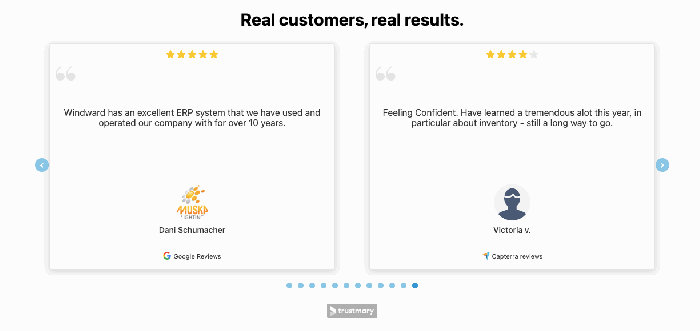Using Testimonials in Marketing: Building Credibility and Trust sets the stage for a deep dive into the world of customer testimonials, showcasing their power in creating trust and credibility in marketing campaigns.
From written testimonials to video testimonials, this guide explores the various types of testimonials, strategies for collecting them, and how to leverage them across different marketing channels for maximum impact.
Importance of Testimonials in Marketing

Testimonials play a crucial role in marketing campaigns by showcasing the positive experiences of satisfied customers. These endorsements provide social proof and credibility to potential customers, helping to build trust and confidence in the brand or product being promoted.
Building Credibility and Trust, Using Testimonials in Marketing
Testimonials act as real-life examples of the benefits and value that a product or service can offer. When potential customers see positive feedback from others who have already tried and tested the product, they are more likely to trust the brand and make a purchase. This trust is essential in converting leads into customers and fostering long-term relationships with consumers.
Examples of Successful Campaigns
One notable example of a successful marketing campaign that leveraged testimonials is the “Share a Coke” campaign by Coca-Cola. By featuring personalized labels with people’s names, Coca-Cola encouraged customers to share their stories and experiences on social media. These user-generated testimonials created a sense of community and connection around the brand, leading to increased sales and brand loyalty.Another example is the skincare brand Glossier, which has built a cult following through user-generated content and testimonials.
By showcasing before-and-after photos, reviews, and testimonials from real customers, Glossier has established itself as a trusted authority in the beauty industry, attracting a loyal customer base.Overall, testimonials are a powerful tool in marketing that can help businesses establish credibility, build trust, and drive conversions. When used strategically, testimonials can significantly impact the success of marketing campaigns and contribute to long-term brand growth.
Types of Testimonials

When it comes to testimonials in marketing, there are various types that businesses can utilize to showcase customer satisfaction and build credibility. Let’s explore the different types of testimonials and their pros and cons in marketing.
Written Testimonials
Written testimonials are one of the most common types of testimonials where customers provide feedback in written form. These testimonials are easy to display on websites, social media, and promotional materials.
- Pros: Written testimonials are easy to read, share, and can be used as social proof to influence potential customers.
- Cons: They may lack authenticity compared to video testimonials and are easier to fake or manipulate.
Video Testimonials
Video testimonials involve customers sharing their feedback in video format, which can be more engaging and impactful than written testimonials.
- Pros: Video testimonials are visually appealing, provide a personal touch, and can help build trust with the audience.
- Cons: They require more effort to produce, may be costly, and not all customers are comfortable appearing on camera.
Social Media Testimonials
Social media testimonials are feedback or reviews shared by customers on platforms like Facebook, Twitter, and Instagram.
- Pros: Social media testimonials are easily shareable, reach a wider audience, and can enhance brand visibility.
- Cons: They are subject to public scrutiny, can receive negative comments, and may not always be genuine.
Tips to Encourage Customer Testimonials
Here are some tips to encourage customers to provide testimonials in various formats:
- Offer incentives such as discounts or giveaways in exchange for testimonials.
- Make the process easy by providing templates or guidelines for customers to follow.
- Engage with customers personally and ask for feedback directly.
- Show appreciation by thanking customers for their testimonials and showcasing them prominently.
Strategies for Collecting Testimonials
Collecting genuine testimonials from customers is crucial for building trust and credibility for your brand. Here are some effective strategies to gather authentic feedback from satisfied customers.
Timing is Key
When requesting testimonials from customers, timing is crucial. Reach out to customers shortly after they have had a positive experience with your product or service. This ensures that their experience is still fresh in their minds, making them more likely to provide a glowing testimonial.
Incentives and Rewards
Offering incentives or rewards to customers for providing testimonials can be a great way to encourage participation. This could include discounts on future purchases, entry into a giveaway, or exclusive access to new products or services. By providing value to customers in exchange for their testimonials, you can increase the likelihood of receiving feedback.
Leveraging Testimonials Across Marketing Channels: Using Testimonials In Marketing
Using testimonials across various marketing channels can significantly boost your brand’s credibility and influence potential customers. Testimonials can be seamlessly integrated into websites, social media platforms, email campaigns, and more to showcase positive feedback from satisfied clients.
Website Integration
When incorporating testimonials on your website, strategically place them on key landing pages or product pages to reassure visitors about the quality of your offerings. Use visuals such as photos or videos alongside testimonials to enhance credibility and engagement.
Social Media Promotion
On social media platforms, leverage testimonials by creating engaging posts that highlight customer experiences and feedback. Encourage satisfied customers to share their testimonials on their own social media profiles to reach a wider audience and generate organic interest in your brand.
Email Campaigns Optimization
In email campaigns, include snippets of testimonials in promotional emails or newsletters to capture the attention of subscribers. Personalize the testimonials based on the recipient’s interests or purchase history to increase relevance and drive conversions.
Best Practices for Maximizing Impact
- Ensure testimonials are authentic and diverse, representing a range of demographics and experiences to resonate with a broader audience.
- Include specific details or metrics in testimonials to provide concrete evidence of the benefits customers have experienced.
- Regularly update testimonials to showcase recent feedback and demonstrate ongoing customer satisfaction.
- Monitor the performance of testimonials across different channels and adjust strategies based on the most effective platforms for engagement.
